Abstract
Previous work has shown that urinary lead, coproporphyrin (CP), and δ-aminolaevulinic acid (ALA) are closely related after exposure to lead. We have confirmed the relationship in 50 automobile workers with different exposures, and have also estimated porphobilinogen (PBG) levels. There was some evidence that a raised ALA level gave an earlier sign of lead absorption than a raised CP level. ALA-dehydratase activity (converting ALA to PBG) was greatly reduced by exposure, on the average to 20% of normal. This reduction in activity was strongly correlated with the increases in urinary lead, CP, and ALA and is the most sensitive test of exposure to lead.
A weak correlation was found between the number of coarsely stippled cells, or the basophilic quotient, and the urinary levels of lead, CP, and ALA.
In addition, the serum aspartate aminotransferase (SGOT) and serum alanine aminotransferase (SGPT) levels were estimated and were not affected by exposure to lead. The serum protein patterns and haemoglobin levels were also unaffected.
Full text
PDF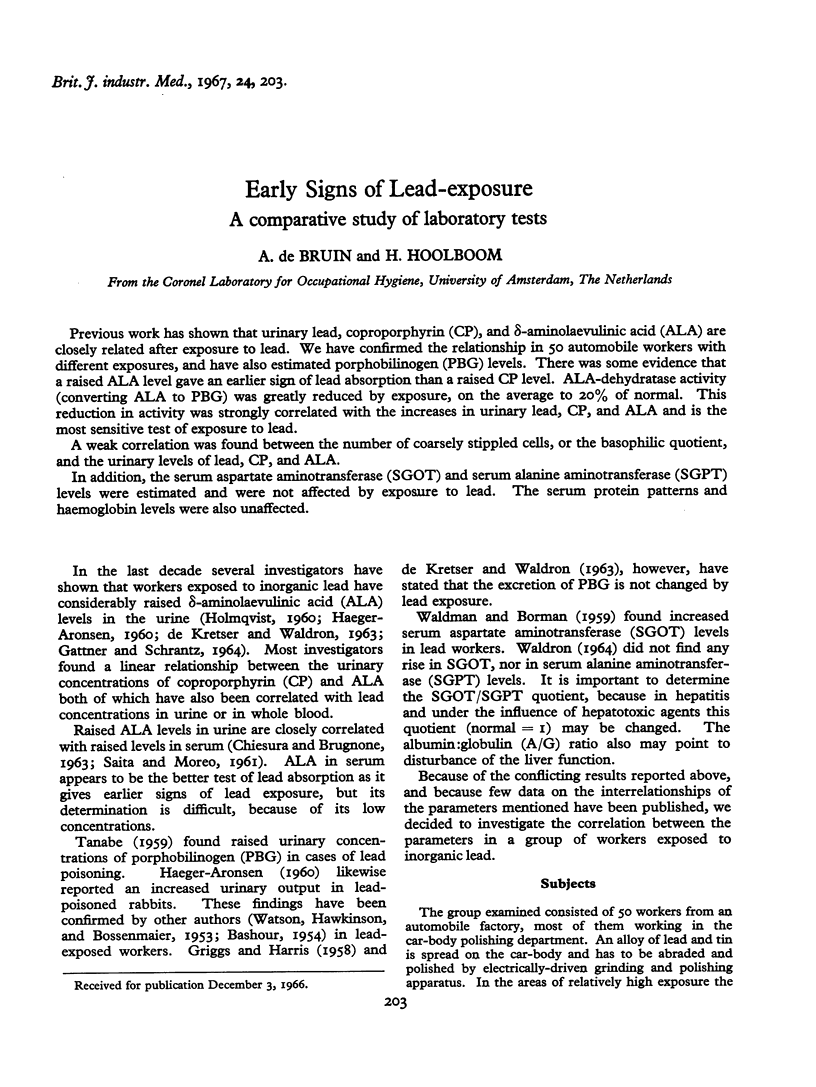
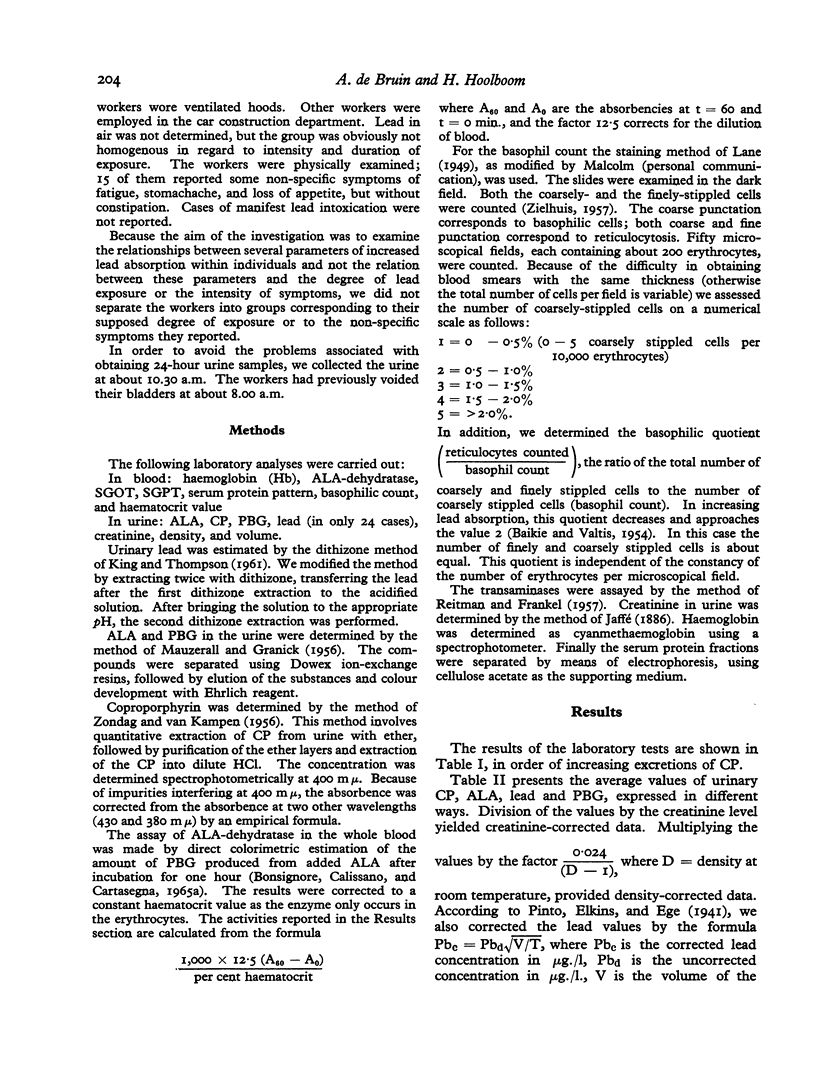
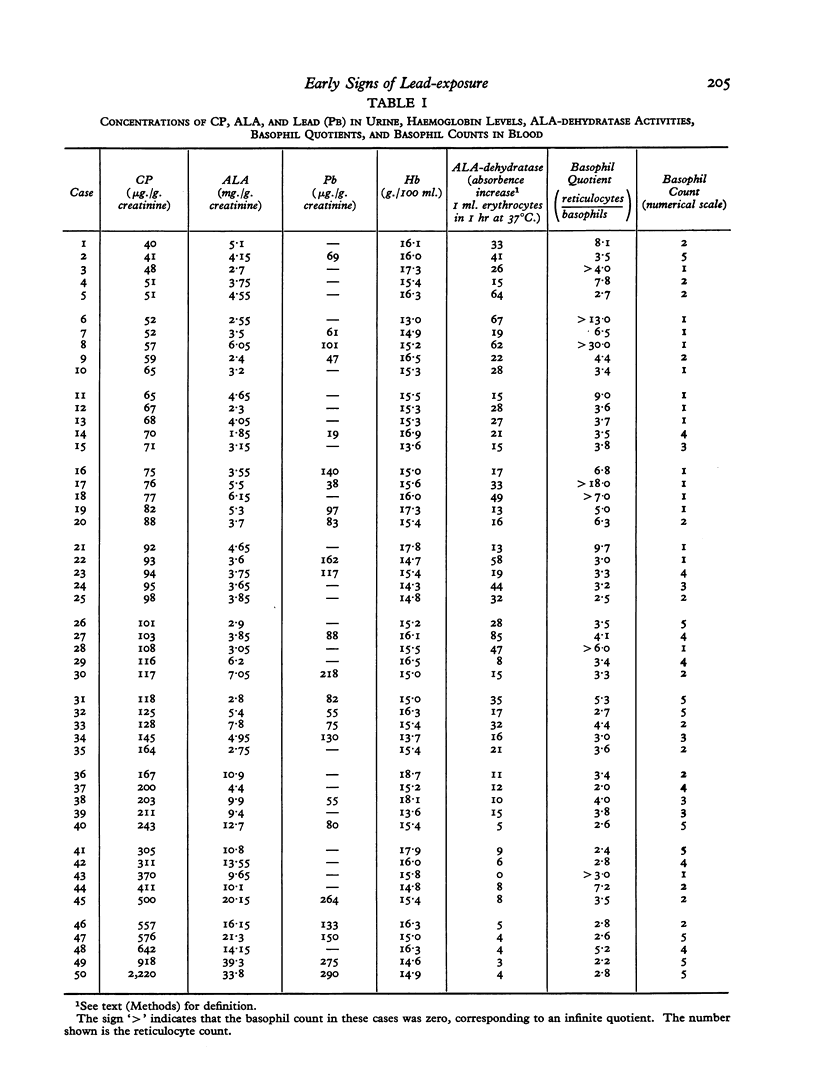
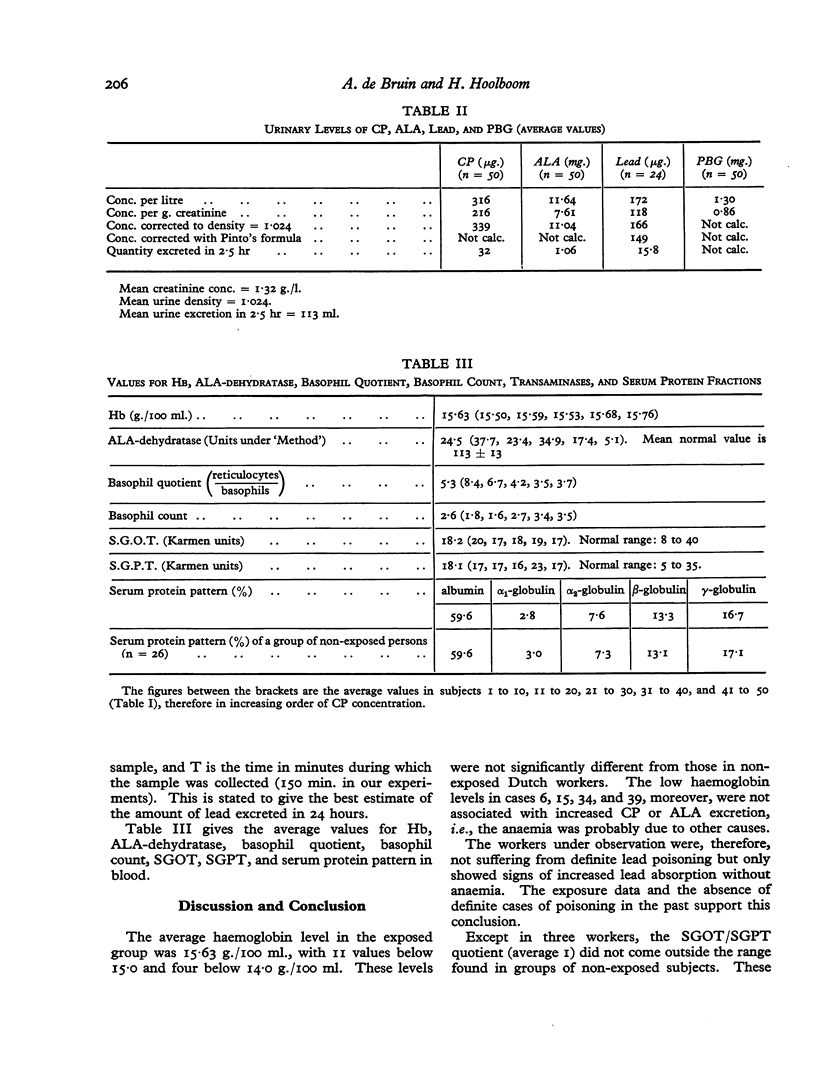
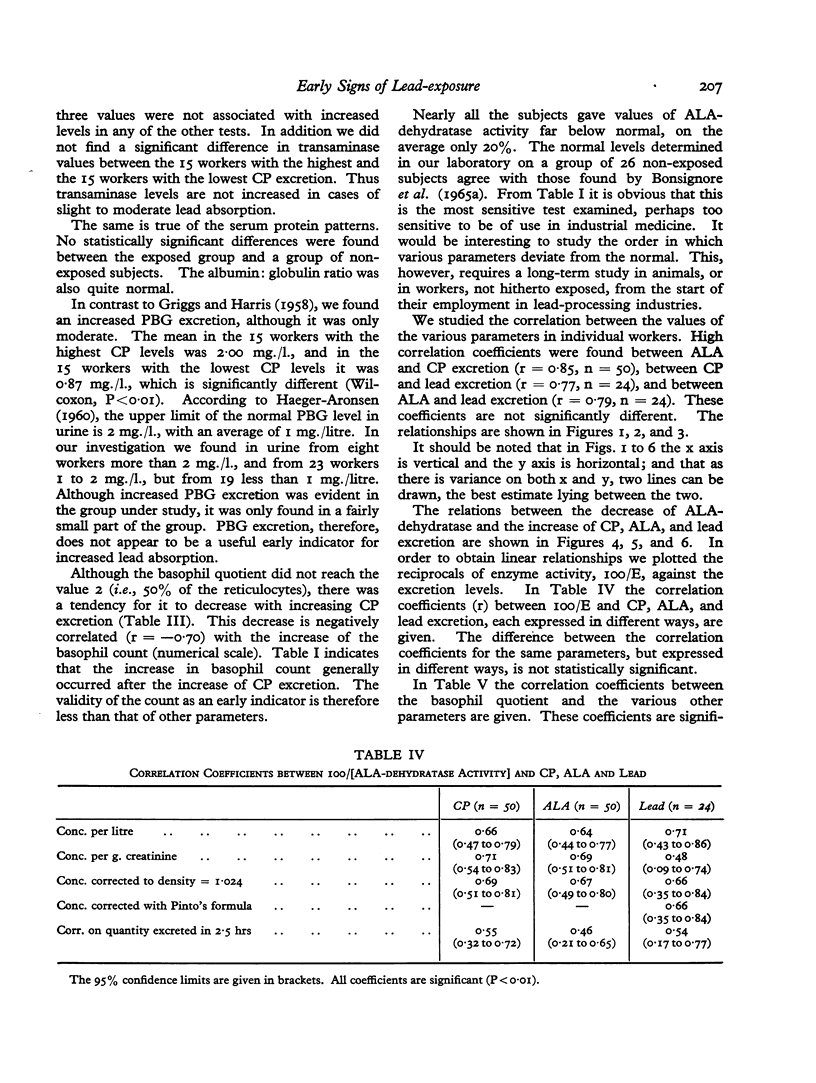
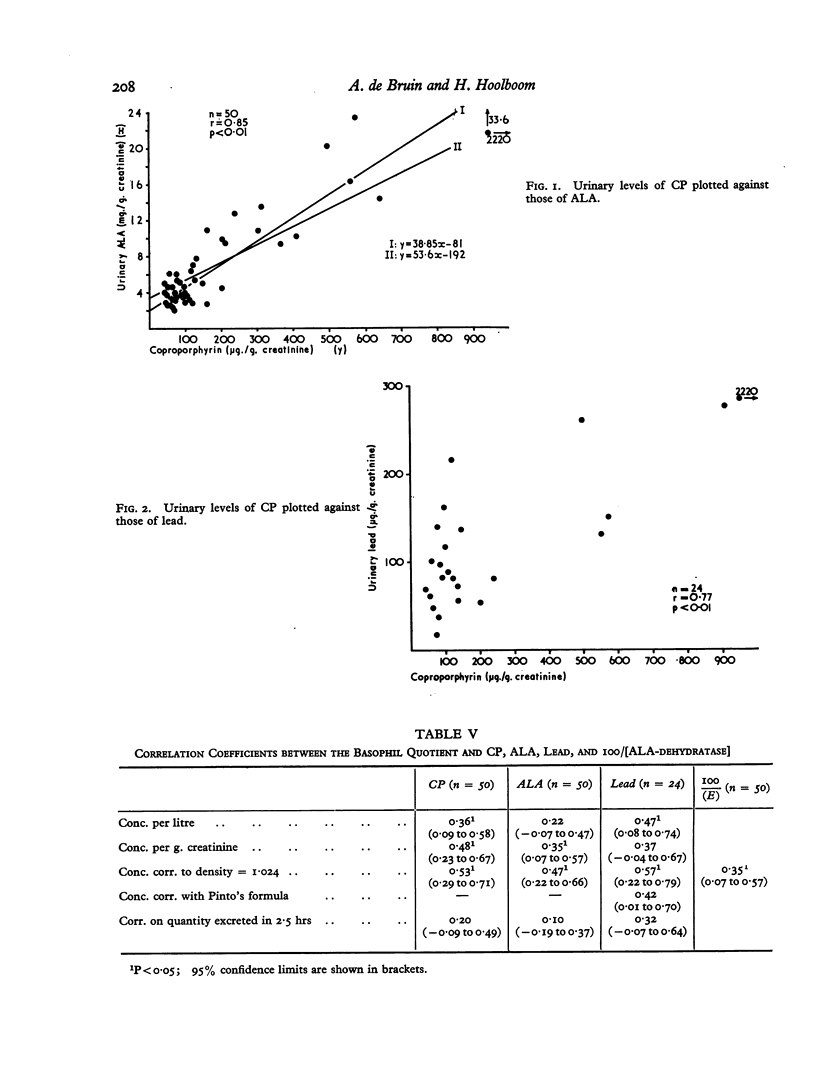
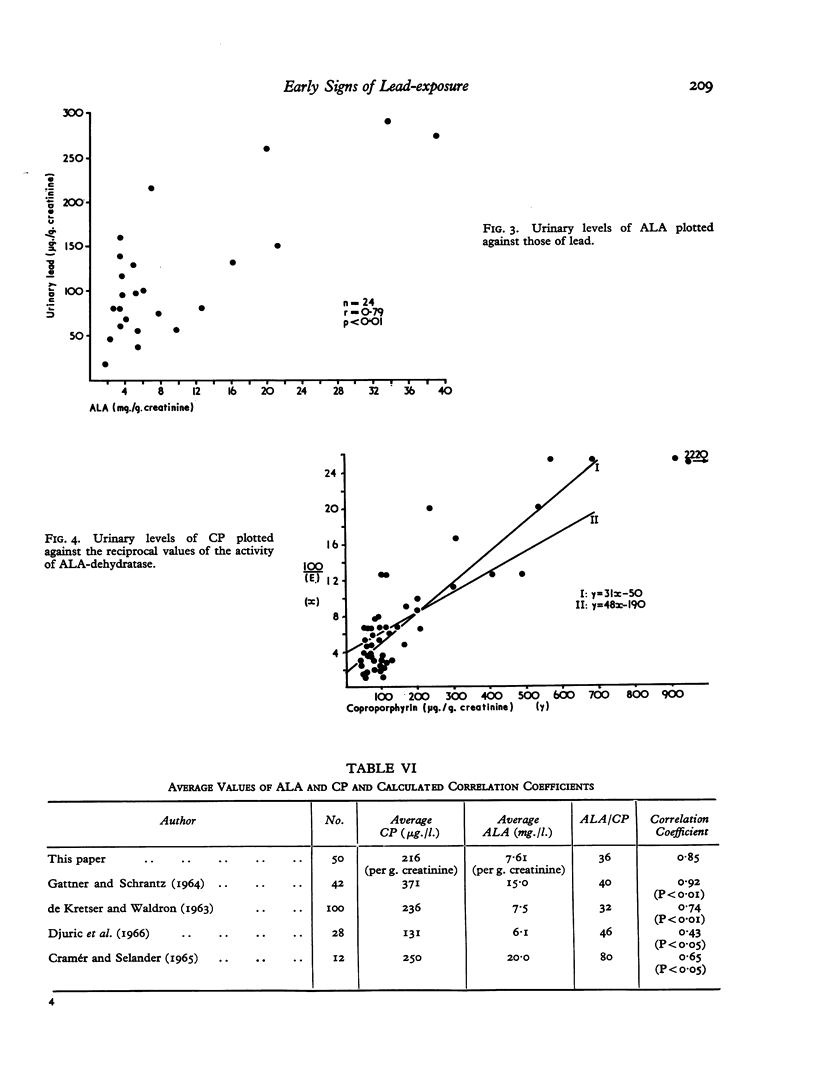
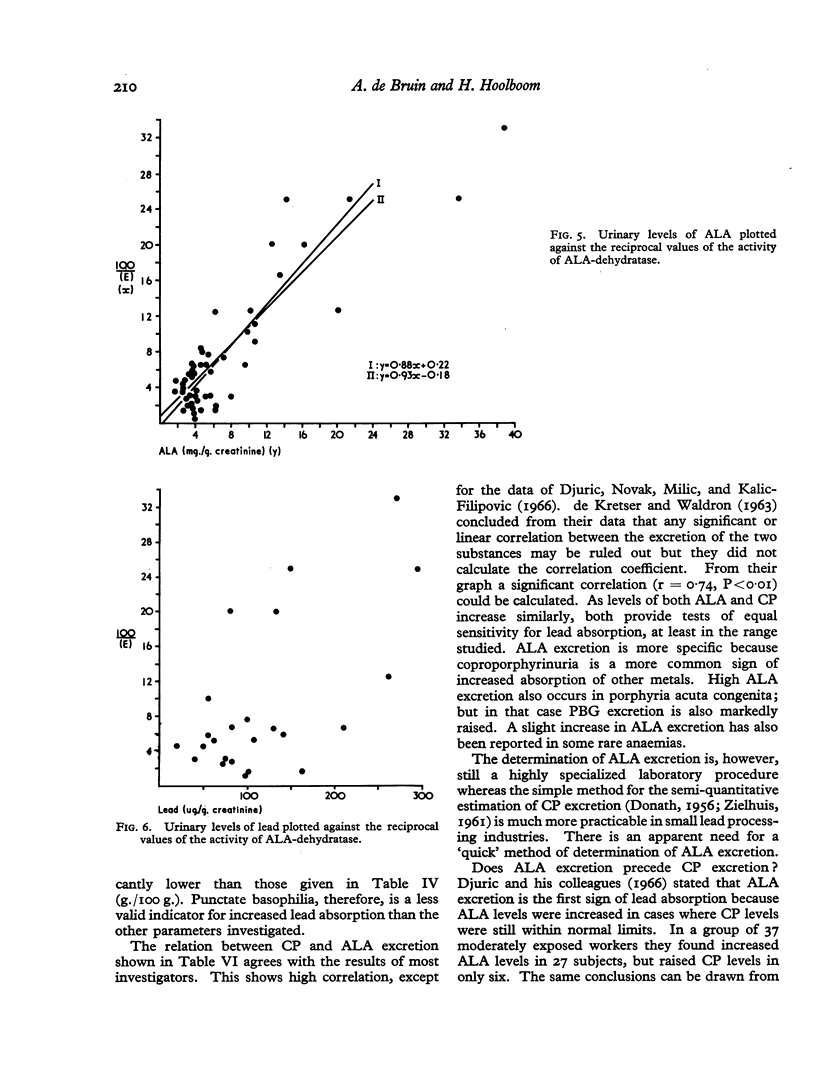
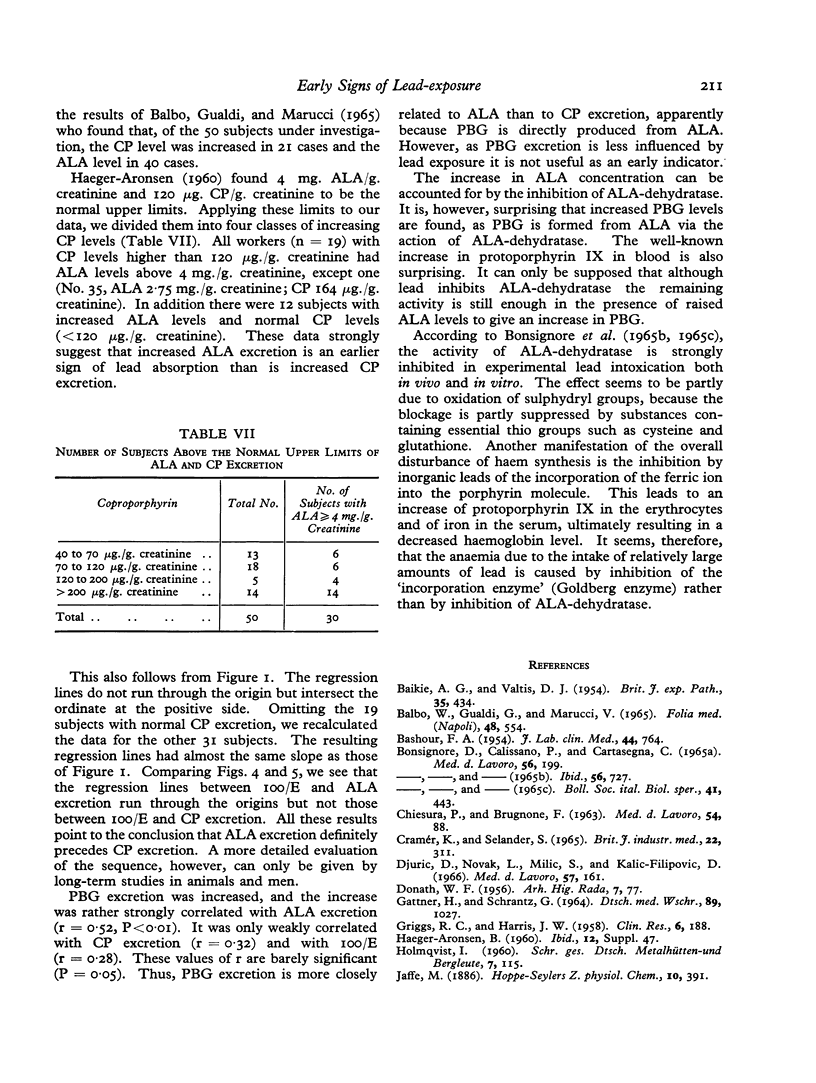
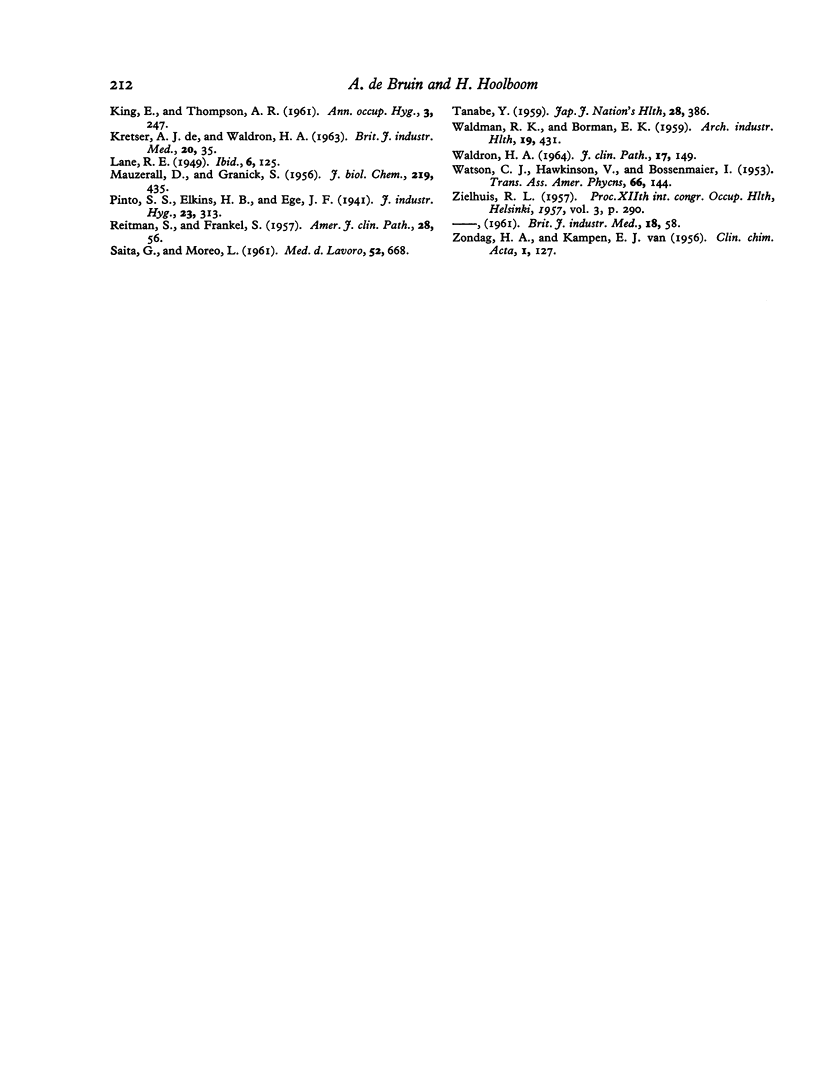
Selected References
These references are in PubMed. This may not be the complete list of references from this article.
- BAIKIE A. G., VALTIS D. J. The oxygen consumption of the blood in experimental lead poisoning. Br J Exp Pathol. 1954 Oct;35(5):434–438. [PMC free article] [PubMed] [Google Scholar]
- GATTNER H., SCHRANTZ G. BESTIMMUNG DER DELTA-AMINOLAEVULINSAEURE-AUSSCHEIDUNG IM URIN ZUR FRUEHDIAGNOSE DER BLEIVERGIFTUNG. Dtsch Med Wochenschr. 1964 May 22;89:1027–1035. doi: 10.1055/s-0028-1111253. [DOI] [PubMed] [Google Scholar]
- SAITA G., MOREO L. [5-Aminolevulinic acid and porphobilinogen in the urine of subjects with lead poisoning]. Med Lav. 1961 Nov;52:668–675. [PubMed] [Google Scholar]


